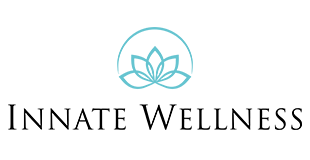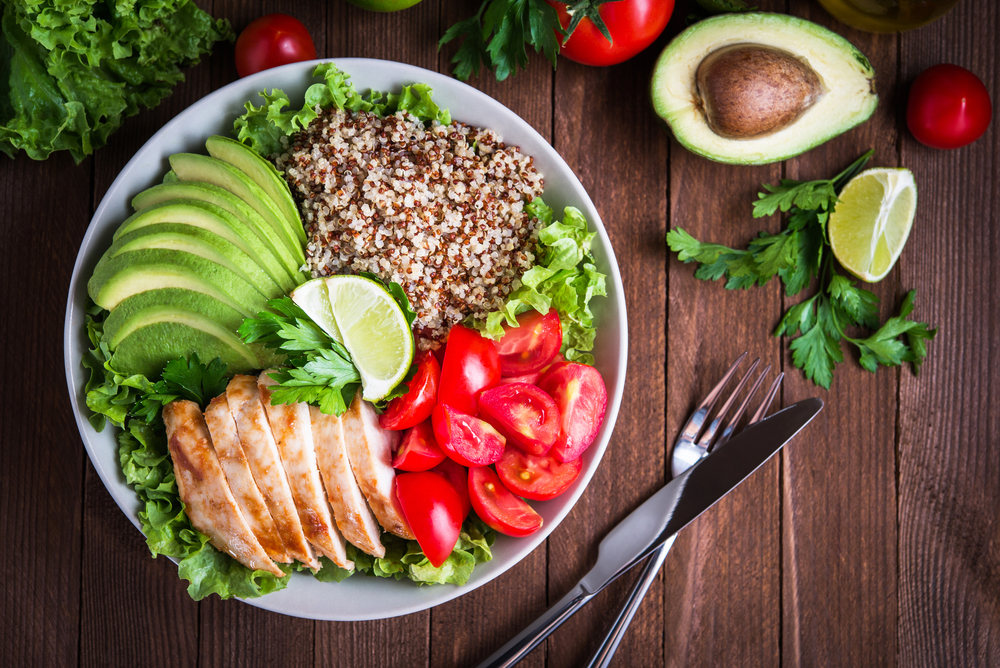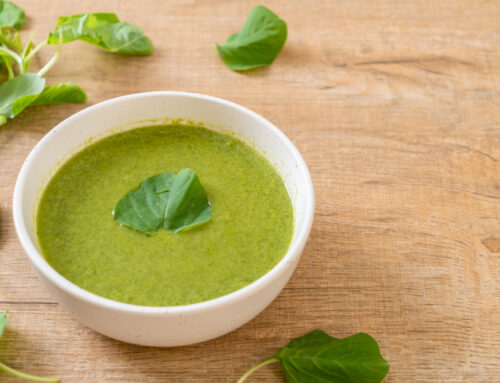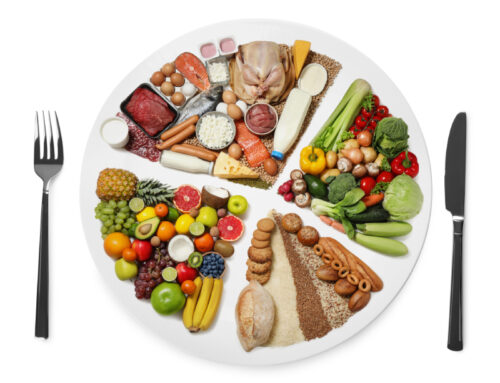By: Dr. Kathleen Regan, ND
It is not a stretch to say that health begins with what you eat. This is true of breast health and hormonal health in general. Changes in breast tissue from benign cysts to breast cancer have been linked to estrogen balance within the body or “estrogen dominance”.
“Estrogen dominance” is a term used to describe a high ratio of estrogen to progesterone or just globally high estradiol (one of the three types of possible estrogen). Estrogen dominance has been linked to many different types of women’s health issues besides breast health including PMS symptoms, menopausal symptoms, uterine fibroids, endometriosis, allergies, decreased libido, fatigue, fibrocystic breasts, headaches, infertility, irritability, and fat gain around the abdomen and on the top of the thighs. In addition, studies have shown a well-established link between excess estrogen and breast cancer, uterine cancer, ovarian cancer and cervical dysplasia.
The good news is that hormones are affected by nutrition. Modifying specific dietary and lifestyle habits can help to keep hormones balanced! The following list includes nutrition habits that negatively impact healthy estrogen balance and healthy breasts.
- Nutrition: A diet low in fibre, low in fruits and vegetables, high in simple carbohydrates (high Glycemic Index), high in poor quality fats and high in alcohol.
- Nutrient Deficiencies: Calcium, Magnesium, Vitamin A, Vitamin D, and low Antioxidants Status have all been linked to estrogen dominance
- High Body Mass Index/Obesity
- Lifestyle Factors: Excess Alcohol Consumption, Smoking, Inactivity
- Digestive Issues/Liver Issues: Imbalanced gut bacteria contribute to poor absorption of nutrients, poor production of some nutrients, poor metabolism of hormonal byproducts and a high toxic burden on the liver. Impaired liver function affects the body’s ability to properly manage estrogen and other hormones.
- Cooking with or drinking from plastics (ex., that contain phthalates and Bisphenol A) is frequently associated with alarming statistics regarding declining reproductive health and increasing rates of cancer and obesity
It is recommended based on 15 years of research that all breast cancer patients be counselled to seek the following nutrition based treatments (1):
- Patients should receive a nutritional assessment immediately after breast cancer diagnosis.
- Patients should be encouraged to pursue and maintain a healthy body weight [body mass index (BMI; in kg/m2) 20-24.9], preserving their lean mass and avoiding an increase in fat mass.
- Daily energy intake should be distributed as follows: <30% fat/d (mainly monounsaturated and polyunsaturated fatty acids), 55% carbohydrates (primarily whole foods such as oats, brown rice, and fruits), and 1.2-1.5 g protein mg/ kg,
- 5-9 servings/day of fruits and vegetables should be encouraged.
- Garlic and cruciferous vegetables must also be part of the nutrition therapy.
- Adequate dietary intakes of food-based macro- and micronutrients rich in β-carotene and vitamins A, E, and C can both prevent deterioration in nutritional status and improve their overall health and prognosis.
- Minimal consumption of caffeinated products. The effects of caffeine vary from individual to individual but high amounts do seem to have an effect on insulin and estrogen. This would mean less than 150-200mg per day or one cup of coffee.
There are a few foods that require special attention in the dietary support of breast health and breast cancer.
Saturated Fat & Polyunsaturated Fat
Research has shown that breast cancer risk was positively associated with high saturated fat intake and a high ratio of Omega 6 polyunsaturated fatty acids (PUFAS) to Omega 3 (PUFAS). This means a diet high in animal fat compared to fish and vegetable sources of fat is related to breast cancer occurrence and recurrence. Increased intake of fish and other foods rich in Omega 3 might reduce breast cancer risk (2, 3).
Dairy
There has been an increasing concern over the hormonal influence of dairy products on human health including the role of some estrogens in the development of breast, prostate and endometrial tumours (5). Research investigating the milk-hormone link has found that the intake of high-fat dairy, but not low-fat dairy, was related to a higher risk after breast cancer diagnosis. Types of high-fat dairy include cream, whole milk, condensed or evaporated milk, other cheese, other yogurt, pudding, ice cream, custard, and flan. While types of low-fat dairy include 1%, 2% and non-fat milk, cheese, desserts, and yogurt (7). One study has shown that consumption of low fat dairy was associated with a lower risk of breast cancer. The authors interpreted this in light of the beneficial effects of calcium and vitamin D (8). Calcium and Vitamin D are protective against breast cancer.
Furthermore, it has been established that high consumption of dairy reduces insulin sensitivity (9). This is VERY important because insulin affects hormones. As discussed above, dairy has also been shown to exert a general hormonal and inflammatory effect within the body. In general, common sense suggests that consumption of high quality dairy (Certified Organic) in moderation can be protective for breast health OR alternatively that restricting cow’s dairy entirely while maintaining health calcium and vitamin D levels is equally advisable. However, if estrogen dominance is an established issue, complete restriction of dairy is advisable.
Soy
Soy has been a hot and controversial topic in the discussion of estrogen dependent cancers for the last few decades (10). Here is what you need to know.
Soy is a ‘phytoestrogen’. Phytoestrogens are plant derived compounds found in a wide variety of foods. One major class of phytoestrogen are the lignans, which are components of plant cell walls and found in many fiber-rich foods such as berries, seeds (particularly flaxseeds), grains, nuts and fruits. Isoflavones and coumestans are the most widely researched groups. Isoflavones are present in berries, wine, grains and nuts, but are most abundant in soybeans and other legumes
A range of health benefits related to soy consumption include a lowered risk of osteoporosis, heart disease, breast cancer, and menopausal symptoms. However, along with the health benefits are health concerns. Many conventional institutions view phytoestrogens as endocrine disruptors with the potential to cause adverse health effects.
Phytoestrogens, fit the Environmental Protection Agency’s definition of an endocrine disruptor meaning they “alter the structure or function(s) of the endocrine system and cause adverse effects.” This definition includes disruption of the timing of puberty, the ability to create healthy babies, lactation, premature reproductive failure and compromised fertility.
Phytoestrogens manipulate hormone levels by interfering with the enzymes needed for sex hormone production. Coumestrol, for example, reduces the conversion of estrone to estradiol. Genistein, though weaker, has a similar effect. This means that certain phytoestrogens promote a LESS DOMINANT form of estrogen. Furthermore, when phytoestrogens bind an estrogen receptor, they promote less dominant forms of estrogen from circulating and prevent the binding of environmentally sourced chemical xenoestrogens which are linked with estrogen dominant cancers.
Moderation is likely key and the incorporation of real foods, as opposed to supplements or processed foods to which soy protein is added, is probably essential for maximizing health benefits. A safe level of consumption is 50-100mg isoflavones per day. In context, that is about ½ cup of tempeh or tofu (always make these organic). In the long run, this may be protective on many levels including reduced cardiovascular risk, osteoporosis risk and estrogen dominance risk. However, it is best AVOIDED in women struggling with menstrual irregularity and infertility and best INCLUDED in individuals being treated or recovering from prostate, endometrial, and breast cancer. It is best AVOIDED in infants and children in adult doses. As always, speak to your health practitioner to see if soy is the right fit for your diet.
Cruciferous Vegetables, Indole-3-Carbinol and DIM
Certain sulfur-containing foods such as those from the brassica family (eg, broccoli, bok choy, cabbage, cauliflower, collards, kale, Brussels sprouts, and kohlrabi) as well as garlic and onions have been shown promote estrogen clearance. Preliminary research has shown that supplementation with indole-3-carbinol (I3C, a compound found in brassicas) can promote healthy metabolism of estrogen and a potential reduction in estrogenic stimulation and breast cancer risk.
I3C breaks down further into another compound called ‘DIM’. It is important to know that DIM is readily metabolized in cruciferous vegetables meaning that it is available in its food form (not just its isolated supplemental form). DIM concentrations rise during cooking. This is evidenced by a 6-fold increase in DIM concentrations in boiled cabbage compared with uncooked cabbage
DIM and its precursor I3C have been widely studied in relation to breast cancer chemoprevention. Numerous mechanisms by which dietary exposure to these compounds may modulate breast cancer by increasing apoptosis (death of cancer cells), modulation of response to oxidative stress and estrogen metabolism amongst other effects (13). In fact DIM has demonstrated chemopreventive activity in all stages of breast cancer carcinogenesis (24).
It is likely that DIM can be safely used in prevention of estrogen dominant forms of cancer, cancer treatment and recovery. However, each patient should consult with their doctor to ensure this is safe during treatment. If supplementation is not advised than dietary inclusion of broccoli, bok choy, cabbage, cauliflower, collards, kale, Brussels sprouts, and kohlrabi is recommended.
References
- Limon-Miro AT, Lopez-Teros V, Astiazaran-Garcia H. Dietary Guidelines for
Breast Cancer Patients: A Critical Review. Adv Nutr. 2017 Jul 14;8(4):613-623. - Bassett JK, Hodge AM, English DR, MacInnis RJ, Giles GG. Plasma phospholipids
fatty acids, dietary fatty acids, and breast cancer risk. Cancer Causes Control.
2016 Jun;27(6):759-73 - Turati F, Galeone C, Gandini S, Augustin LS, Jenkins DJ, Pelucchi C, La
Vecchia C. High glycemic index and glycemic load are associated with moderately
increased cancer risk. Mol Nutr Food Res. 2015 Jul;59(7):1384-94. - Mauvais-Jarvis F, Clegg DJ, Hevener AL. The Role of Estrogens in Control of Energy Balance and Glucose Homeostasis. Endocrine Reviews. 2013;34(3):309-338. doi:10.1210/er.2012-1055.
- MALEKINEJAD H, REZABAKHSH A. Hormones in Dairy Foods and Their Impact on Public Health – A Narrative Review Article. Iranian Journal of Public Health. 2015;44(6):742-758.
- Carwile JL, Willett WC, Michels KB. Consumption of low-fat dairy products may delay natural menopause. J Nutr. 2013 Oct;143(10):1642-50.
- Kroenke CH, Kwan ML, Sweeney C, Castillo A, Caan BJ. High- and low-fat dairy intake, recurrence, and mortality after breast cancer diagnosis. J Natl Cancer Inst. 2013 May 1;105(9):616-23.
- Shin MH, Holmes MD, Hankinson SE, Wu K, Colditz GA, Willett WC. Intake of dairy products, calcium, and vitamin d and risk of breast cancer. J Natl Cancer Inst. 2002 Sep 4;94(17):1301-11.
- Turner KM, Keogh JB, Clifton PM. Red meat, dairy, and insulin sensitivity: a
randomized crossover intervention study. Am J Clin Nutr. 2015 Jun;101(6):1173-9. - Patisaul HB, Jefferson W. The pros and cons of phytoestrogens. Frontiers in neuroendocrinology. 2010;31(4):400-419.
- Marques-Pinto A, Carvalho D. Human infertility: are endocrine disruptors to blame? Endocrine Connections. 2013;2(3):R15-R29. doi:10.1530/EC-13-0036.
- Rajoria S, Suriano R, Parmar PS, et al. 3,3′-Diindolylmethane Modulates Estrogen Metabolism in Patients with Thyroid Proliferative Disease: A Pilot Study. Thyroid. 2011;21(3):299-304.
- Thomson CA, Ho E, Strom MB. Chemopreventive properties of 3,3′-diindolylmethane in breast cancer: evidence from experimental and human studies. Nutrition Reviews. 2016;74(7):432-443.
- Ebrahimi E, Khayati Motlagh S, Nemati S, Tavakoli Z. Effects of Magnesium and Vitamin B6 on the Severity of Premenstrual Syndrome Symptoms. Journal of Caring Sciences. 2012;1(4):183-189.
- Dullo P, Vedi N. Changes in serum calcium, magnesium and inorganic phosphorus levels during different phases of the menstrual cycle. Journal of Human Reproductive Sciences. 2008;1(2):77-80.
- Calcium-D-glucarate. Altern Med Rev. 2002 Aug;7(4):336-9. Review.
- Kinuta K, Tanaka H, Moriwake T, Aya K, Kato S, Seino Y. Vitamin D is an
important factor in estrogen biosynthesis of both female and male gonads.
2000 Apr;141(4):1317-24 - Oh H, Coburn SB, Matthews CE, et al. Anthropometric measures and serum estrogen metabolism in postmenopausal women: the Women’s Health Initiative Observational Study. Breast Cancer Research : BCR. 2017;19:28.
- Kossman DA, Williams NI, Domchek SM, et al. Exercise lowers estrogen and progesterone levels in premenopausal women at high risk of breast cancer. J Appl Physiol. 2011;111(6):1687-1693.
- Schmitz KH, Williams NI, Kontos D, Domchek S, Morales KH, Hwang WT, Grant LL, DiGiovanni L, Salvatore D, Fenderson D, Schnall M, Galantino ML, Stopfer J,Kurzer MS, Wu S, Adelman J, Brown JC, Good J. Dose-response effects of aerobic exercise on estrogen among women at high risk for breast cancer: a randomized controlled trial. Breast Cancer Res Treat. 2015 Nov;154(2):309-18.
- Toufexis D, Rivarola MA, Lara H, Viau V. Stress and the Reproductive Axis. Journal of neuroendocrinology. 2014;26(9):573-586
- Genes SG. [Role of the liver in hormone metabolism and in the regulation of their content in the blood]. Arkh Patol. 1977;39(6):74-80.
- Marino L, Jornayvaz FR. Endocrine causes of nonalcoholic fatty liver disease. World Journal of Gastroenterology : WJG. 2015;21(39):11053-11076.
- Thomson CA, Ho E, Strom MB. Chemopreventive properties of 3,3′-diindolylmethane in breast cancer: evidence from experimental and human studies. Nutrition Reviews. 2016;74(7):432-443
- Smith AJ, Phipps WR, Thomas W, Schmitz KH, Kurzer MS. The Effects of Aerobic Exercise on Estrogen Metabolism in Healthy Premenopausal Women. Cancer epidemiology, biomarkers & prevention : a publication of the American Association for Cancer Research, cosponsored by the American Society of Preventive Oncology. 2013;22(5):756-764.
- Milk Thistle HEalth Professional Monograph. As cited on: https://www.ncbi.nlm.nih.gov/pubmedhealth/PMH0032607/#CDR0000347008__31. National Centre for Biotechnology Information.
- Newberne PM. Lipotropic factors and oncogenesis. Adv Exp Med Biol.
1986;206:223-51. - Mulak A, Taché Y, Larauche M. Sex hormones in the modulation of irritable bowel syndrome. World Journal of Gastroenterology : WJG. 2014;20(10):2433-2448.
- Aragón F, Perdigón G, de Moreno de LeBlanc A. Modification in the diet can induce beneficial effects against breast cancer. World Journal of Clinical Oncology. 2014;5(3):455-464.
- Larsson, S.C., Bergkvist, L. & Wolk, A. Folate intake and risk of breast cancer by estrogen and progesterone receptor status. Cancer Epidemiol Biomarkers Prev. 2008; Dec 17(12):3444-9.
- Boyne DJ, Friedenreich CM, McIntyre JB, Stanczyk FZ, Courneya KS, King WD. Endogenous sex hormone exposure and repetitive element DNA methylation in healthy postmenopausal women. Cancer Causes Control. 2017 Sep 19.
- Luo WP, Du YF, Huang J, Huang WQ, Xu M, Yan B, Mo XF, Zhang CX. [Effect of peripheral bloodgenomic DNA methylation on the relationship between methyl donor status and risk of breast cancer]. Zhonghua Liu Xing Bing Xue Za Zhi. 2017 Apr10;38(4):537-541.






